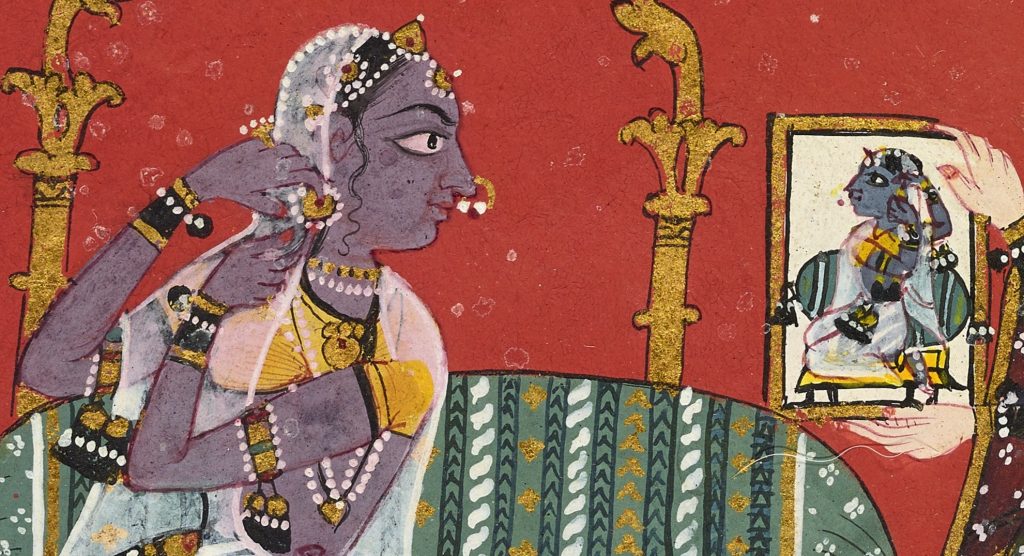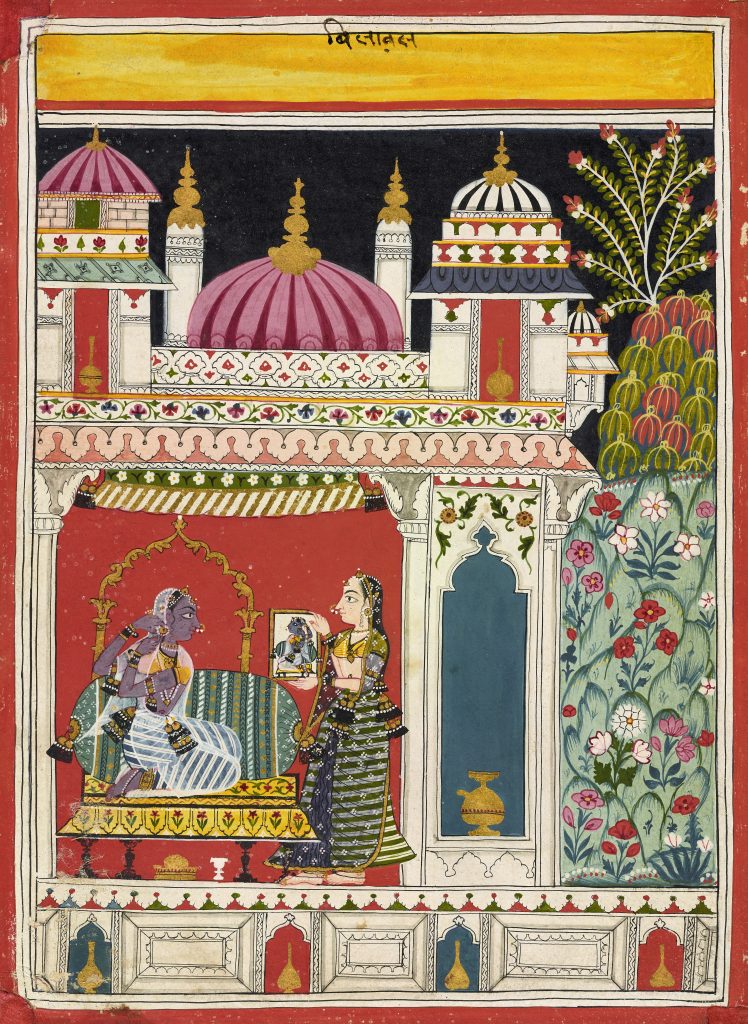Vilaval Ragini
Vilaval Ragini
India, Madhya Pradesh, Malwa, ca. 1680
Opaque watercolor and gold on paper
Courtesy the Arthur M. Sackler Gallery, Smithsonian Institution, Washington, D.C.: Purchase and partial gift from the Catherine and Ralph Benkaim Collection — funds provided by the Friends of the Freer and Sackler Galleries, S2018.1.21
As an implied morning sun illuminates the golden finials of the palace, love is blooming as the heroine completes her preparations before meeting her lover. With the aid of her confidante she puts on her earrings and ornaments. The role of the confidante was to act as a liaison between the heroine and the hero. Since the heroine was often limited to the confines of her house, it was important to have a trusted friend to carry messages between the lovers. The confidante also provided advice and encouragement for the heroine in the different stages of love. The concept of hero and heroine and confidante was first presented in the Text on Theatrical Arts (Natyashastra) by Bharata Muni and dates to before the first century. Bharata featured the heroine and hero in all possibilities of love.
The act of adorning the body with ornaments (jewelry, makeup, clothing, and perfume) was considered an essential part of the process of creating the mood of romance (shringara). It was so intimately connected with romance that the tools used for this ornamentation were also called shringara. Besides enhancing the beauty of the heroine, ornament was believed to provide good fortune and protection.

The image of a beautiful woman looking in a mirror is popular and appears in many ragamala sets. (Please see the two other examples of Vilaval Ragini in this exhibit)). Mirrors were considered to be auspicious. Both painters and poets used the imagery of the mirror when creating scenes of love. The first glance of the beloved was often reflected in a mirror, and lovers were frequently depicted looking together into the mirror, as if to highlight their union.
The painter also used ornamentation – bright and contrasting colors, patterns, and curvy lines – to provide “visual arousal,” and contribute to the audience’s perception of love (shringara rasa). In this way, the extravagant designs on the domed buildings, the artistic arrangements of the flowers in the garden, and the brightly colored plaid garments worn by the women, all cause the rasa of shringara to bloom within the viewer.
Although this painting is currently attributed to the Malwa court, identification of paintings from this area of north-central India can be uncertain. Artists often traveled between Malwa and the neighboring Bundelkhand and there is little documentation of the existing works.
Malwa has been an artistic and cultural center since the fifth-century Gupta Empire. The region was assimilated into the Mughal Empire in 1562. Its artwork tends to resemble pre-Mughal styles. Some scholars speculate that the artistic conservatism of the region may have been a conscious decision to express their traditional aesthetic over that of the Mughals.
